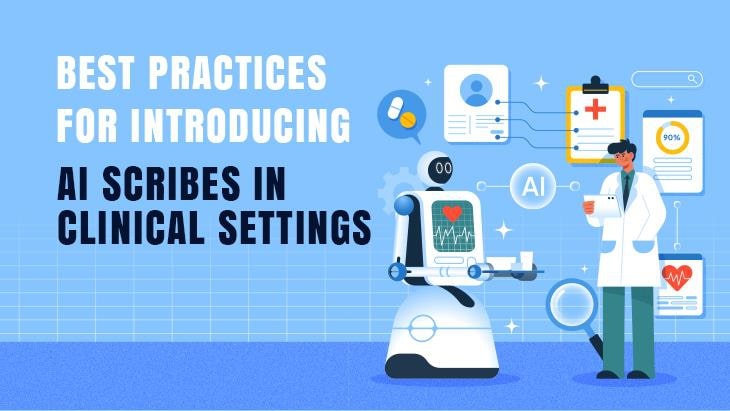Creating a website is one of the most critical steps toward small business success in today's world. It's the necessary foundation to build an online presence and bring website delivery success rate.
A website has become a more powerful tool in today's marketing landscape than ever. One's website is a 24/7 salesman, and it has the potential to be the most powerful asset.
When people visit a particular website, it can potentially enlighten them more about the motto. A website development company can seamlessly design a website across all channels.
How to improve your website delivery success rate? There are certain things to work on to bring website delivery success rate.
Top 6 Things That Will Help Build Websites
1. Create memorable content
It's not enough to post content. And one needs to create unique content and cut through the noise. Valuable and memorable content is one of the top ways to increase website traffic. People use Google to find specific, thorough and accurate answers to their questions, and content should be there to provide those answers.
Websites featuring blog content generate 434% more search engine-indexed pages than those without it. In addition, sites that release more than 16 posts per month receive nearly 3.5 times more traffic than those that publish zero to four articles. The bottom line is that when they care about the content they produce, post regularly, web traffic should improve.
2. Make the website mobile friendly
On average, people spend 5 hours on their smartphones a day. More than half of smartphone users have discovered a new company or product when searching on their smartphones. Having a mobile-friendly website is imperative. 57% of all web traffic is done on mobile devices.
More than half of the customers are checking out from their smartphones. It’s silly to risk losing customers and referrals based on something one can quickly fix. If having a responsive website for mobile devices isn’t a top priority, make sure that their site is mobile friendly.
One of the best things about having a mobile-friendly website is that you can reach a wider audience. Responsive websites make online sharing simple, so web visitors are more likely to share on their social platforms.
Plus, mobile-friendliness is a ranking symbol on Google. That means that mobile-friendly websites appear higher in search results. Having a responsive website is a free way to rank better on search engines.
3. Use advertising to increase website traffic
Advertising through paid search, social media, and displaying ads can efficiently increase website traffic. Each option comes with its upsides and downsides. For instance, users can block display ads, and the average cost per click for Google Ads on the search network is between $1 and $2 per click.
For instance, when doing pay per click (PPC) ads, it's critical to start with one campaign and a few different ad groups containing the keywords that one wants to target most. Once campaigns begin, see how audiences behave with various keywords. Maybe one keyword only resulted in impressions, which didn't increase website traffic, while another resulted in clicks and conversions.
4. Optimize the website for organic search
Many business relationships are formed after someone types a word or phrase into a search engine to find a website. That's an organic search at work. It's easier to draw in more visitors when they know the search terms people use to find your website currently.
These terms might be specific to them, such as a brand or product name. Or, they can be attributes or benefits like "all-natural," "free delivery," or something else that sets you apart. In Google Analytics, one can view what terms the website visitors have used to find in the past and use those keywords to help optimize the website content.
It can also be instructive to look at the terms your competition uses on their websites, social media, or emails. The keywords to focus on should be a person's common words.
Google Search Console is another free tool to see how often the website appears in search results, which search terms drive the most visitors, and how many people click on the site in search results.
5. Track the websites for crawl errors and 404 pages
One change that has evolved over the last few years is the layout of the Crawl Errors view within Search Console. Search Console is divided into two main sections: Site Errors and URL Errors.
Categorizing errors in this way is helpful because there’s a distinct difference between errors at the site level and errors at the page level. Site-level issues can be more catastrophic, potentially damaging your site’s overall usability. On the other hand, URL errors are specific to individual pages and are therefore less urgent.
The quickest way to access Crawl Errors is from the dashboard. The main dashboard gives you a quick preview of your site, showing you three of the most critical management tools: Crawl Errors, Search Analytics, and Sitemaps.
6. Perform keyword research
Always include relevant keywords in the website content. Keywords should be used naturally, not stuffed into the content so much that they detract from the main idea or distract the reader. It's essential to use keywords throughout the range, like the meta description, the page title, the URL, headers and a few times throughout the piece.
To conduct keyword research, one can use tools like Moz, Ahrefs and SEMrush. These sites show what keywords competitors are using, how often people search for keywords, how expensive the keyword is for pay-per-click ads, related keywords and much more valuable information to guide keyword strategy.
Hiring a Search Engine Optimisation (SEO) agency is always an option. They can offer valuable insights and perform audits to identify issues that may keep the site from being shown in search engines.
How to Improve a Website?
Here’s a list of few tips that could do wonders for your website:
1. Use white space
2. Optimize the page speed
3. Use attractive calls to action
4. Use hyperlink differentiation
5. Segment key information with bullet points
6. Use images carefully
7. Include well-designed and written headlines
8. Keep the website pages consistent
9. Catch the 404s
10. Be responsive and mobile-friendly.
The website is the core anchor in terms of digital marketing efforts.
Achieving a website delivery success rate requires understanding the problems different visitors have to solve.

















Post Comments